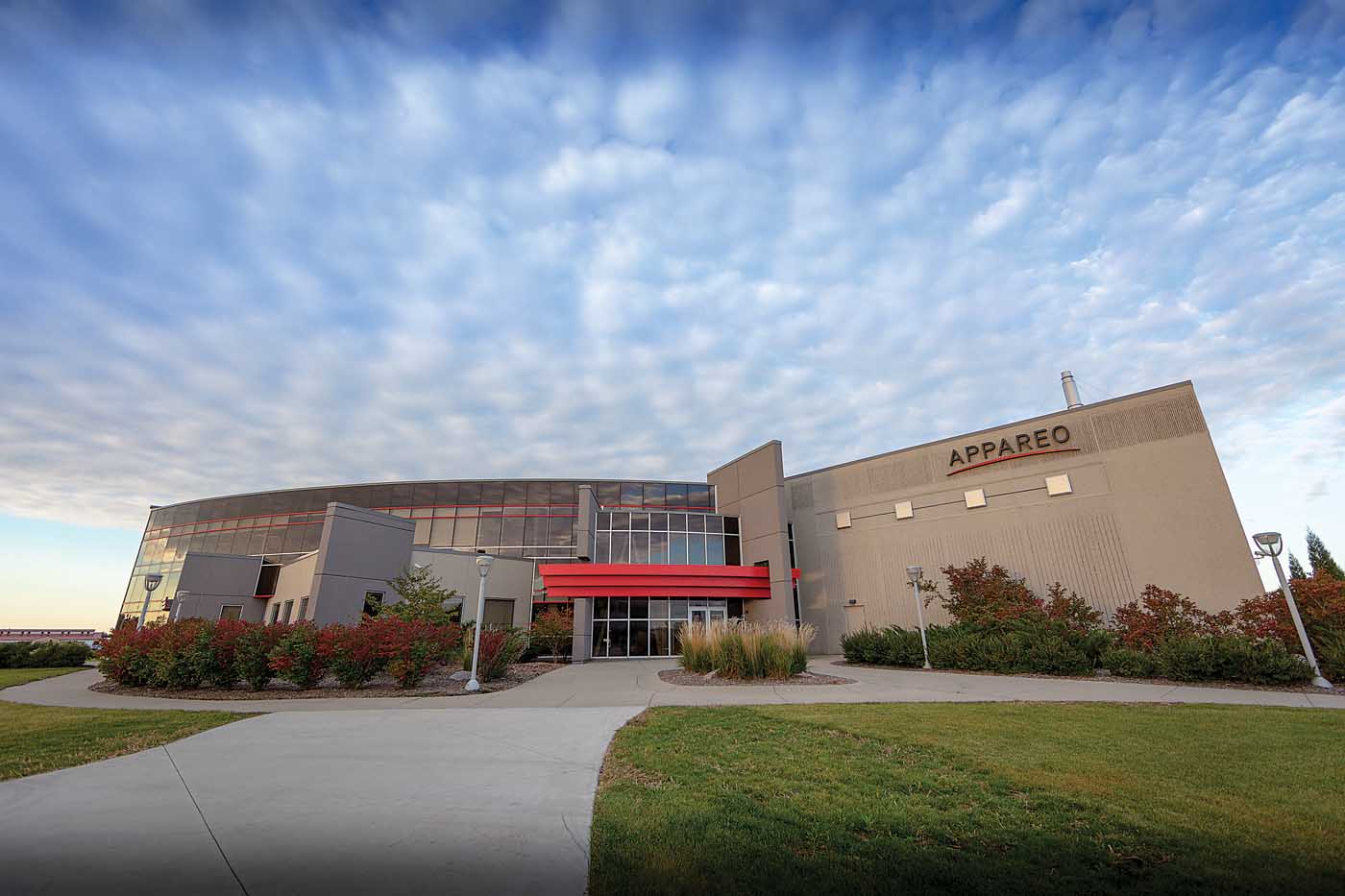In the early 2000s, when Appareo Systems launched as a small product development and technology company in Fargo, North Dakota, digital flight data management (FDM) was a distant dream in an aviation industry that still primarily relied on analog equipment.
Steam gauges and vacuum instruments were standard equipment on most helicopter platforms at the time, and meaningful data about the in-cockpit conditions that preceded an incident or accident were rare and hard to find.

So it was that Appareo developed some of the industry’s first lightweight flight data recorders (FDRs). At the time, most operators still didn’t have a clear idea of what happened in the cockpit during an accident. To solve this problem, Appareo partnered with Airbus Helicopters (formerly Eurocopter), to develop the Vision 1000, a lightweight flight recorder that fits in the palm of a hand and captures cockpit video; intercom system audio; wide area augmentation system and global positioning system data; attitude data (yaw, pitch, roll); rates of rotation; and acceleration data (G forces).
“What Vision 1000 did that was really innovative is, it made it really easy to put that kind of equipment on all kinds of aircraft that previously weren’t candidates for it,” said David Batcheller, president and chief business officer of Appareo.
If a small operator didn’t have weight to spare, extra cockpit space available, or the budget to invest in a larger flight data recorder, the Vision 1000 was a natural fit. All those barriers suddenly disappeared.
“You give it power, plug it in, and all of a sudden … it’s going to give you a rich starting point of information,” said Batcheller.
Although the Vision 1000 is tremendously valuable to investigators after catastrophic events, it’s also a remarkably useful tool for avoiding disaster. The device easily transfers data via SD card following a flight and can be used as part of a post-flight debrief or as a training tool.
The goal is to address small safety indiscretions that may become habits over time — known as the normalization of deviance — while they’re still fresh in mind and haven’t yet caused an accident.

“You can get a gentle, positive training reminder,” said Batcheller. “If you do this long enough, from a career perspective, it’s going to save lives.”
Hundreds of helicopter operators around the world rely on the Vision 1000 for crucial flight data, and the company believes it has saved countless lives. But the next iteration of Appareo’s lightweight FDR technology takes the form to an entirely new level.
AIRS-400, the new airborne image recording system from Appareo, has all the capabilities of the Vision 1000 and many more, including a 4K ultra-high-definition video camera and cellular data offload. The device weighs just 11 ounces (300 grams) and is billed as the most versatile and flexible lightweight flight data recorder on the market. Appareo expects Federal Aviation Administration approval by the end of 2021, with shipments starting shortly after certification.
“Digital cameras have come a long way in the last 10 years or so,” said Batcheller. “And better cameras answer questions that were hard to answer before. We’re able to acquire better pictures much faster. That’s a much more fluid picture of what’s going on inside the cockpit.”
AIRS-400 is a Class C airborne image recorder, and can be paired with a crash-hardened storage module (including Appareo’s own RDM-500, currently under development) to meet or exceed ED-155 crash survivability standards. ED-155 is the minimum operational performance specification for a lightweight FDR system.
This product comes with 35 gigabytes of internal memory in a crash-hardened hard drive capable of recording two hours of video and audio, more than 200 hours of inertial measurement unit (IMU) data, and 100 hours of Aeronautical Radio INC (ARINC) 429 data.

AIRS-400 can also record to a removable SD card, providing up to 64 hours of video and audio. The AIRS-400 is a drop-in replacement for the Vision 1000; operators can plug the new device directly into the Vision 1000 harness and re-use the original mounting bracket.
All data from the internal hard drive (except for video) can be automatically transferred via cellular offload upon returning to base. AIRS-400 pairs seamlessly with Appareo’s suite of FDM and flight operational quality assurance (FOQA) software, which is said to be the most user-friendly set of FDM software tools on the market.
Appareo EnVision web-based flight analysis software enables an FDM team to quickly filter flight data by using customized event triggers, and provide an in-depth overview of the safety performance of both the aircraft and aircrews.

“Our core values are innovate, create, inspire and grow,” said Batcheller. “We feel really strongly that an organization has got to have the courage to do challenging things — to step into the market and try disruptive things.”
AIRS-400 is the latest in a long line of Appareo products that have quietly disrupted the helicopter industry by improving safety and breaking down barriers. Those same principles are firmly in place as the company looks to the future.
“The team has done some amazing work here,” said Batcheller. “And I’m looking forward to seeing it out in the industry and putting it in customers’ hands, because that’s where the magic happens.”









